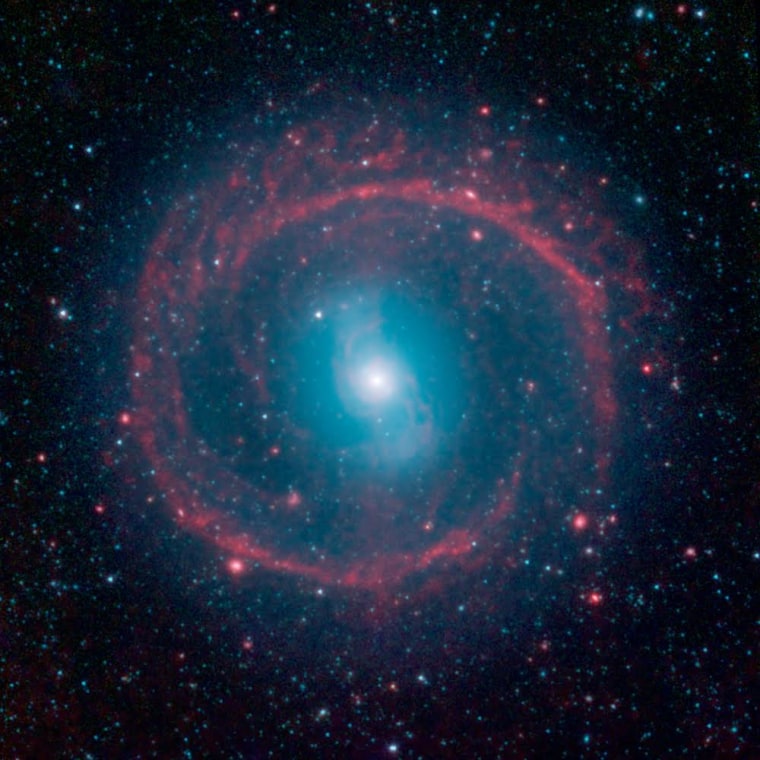This stunning new image taken by NASA's Spitzer Space Telescope shows stars actively being born over 33 million light-years away. Spitzer is one of NASA's Great Observatories, focused on the infrared part of the electromagnetic spectrum. Infrared is light that has less energy and a longer wavelength than the red light our eyes can see. Discovered in 1800 by William Herschel (an astronomer), it's somewhat analogous to thermal radiation. You've probably seen it visualized many times in movies and on TV by characters using night-vision goggles. By comparison, Spitzer is like night-vision on steroids.
In the universe, infrared radiation comes primarily from gas and dust. People often think space is completely empty between stars and between galaxies, and while it's true the density of particles drops off dramatically, there is still a considerable amount of gas and dust floating around. This material is important to astronomers because it acts as fuel for star formation and hungry black holes, both of which influence how galaxies grow and evolve.
This image from Spitzer shows active star formation in a galaxy known as NGC 1291 (creatively named as the 1291st object in the New General Catalog). The colors in this image represent wavelengths and not what our eyes would actually see. Shorter infrared wavelengths (closer to red light in the visible spectrum) are blue and longer infrared wavelengths (closer to microwave radiation) are red. The blue areas therefore represent actual stars (stars give off infrared light at higher frequencies) while the red areas represent concentrations of gas and dust.
The concentration of blue in the center tells astronomers that the stars in the central bulge are older and have long exhausted their supply of gas and dust for making new stars. Conversely, the bright red ring shows that large amounts of gas and dust are now concentrated in the outskirts of the galaxy, which will lead to a burst of star formation and millions of new stars. The timeline for when star formation shifts from the center to the outer regions of a galaxy depends strongly on the structure and dynamics of each individual galaxy. So observations like this are not only gorgeous to look at, but are valuable new data points for astronomers working in the field of galaxy evolution.
Here's some geek that took place closer to home:
- Scientists investigate the cognitive effects of vodka versus bourbon ‐‐ with goldfish.
- If you think traveling across time zones wreaks havoc on you, check out what it does to all the microbes inside you.
- The science of why we are easily fooled by stunt doubles.
- The chemistry behind the smell of paper books.
- Astronomers have discovered two different families of comets around another star in our galaxy.
- The U.S. Air Force's X-37B secret test vehicle recently landed at Vandenberg Air Force Base after two years in space on a classified mission.
- Paleontologists sequenced genes from a 45,000‐year‐old human leg bone found in Siberia.
- The science of the spherical food fad in molecular gastronomy.
- Halloween geek for next weekend: the way sugar cools determines whether candy is hard or soft.
- The BBC has launched a new interactive feature that lets you explore what has happened on Earth over your lifetime.
Keep on geeking! @Summer_Ash
